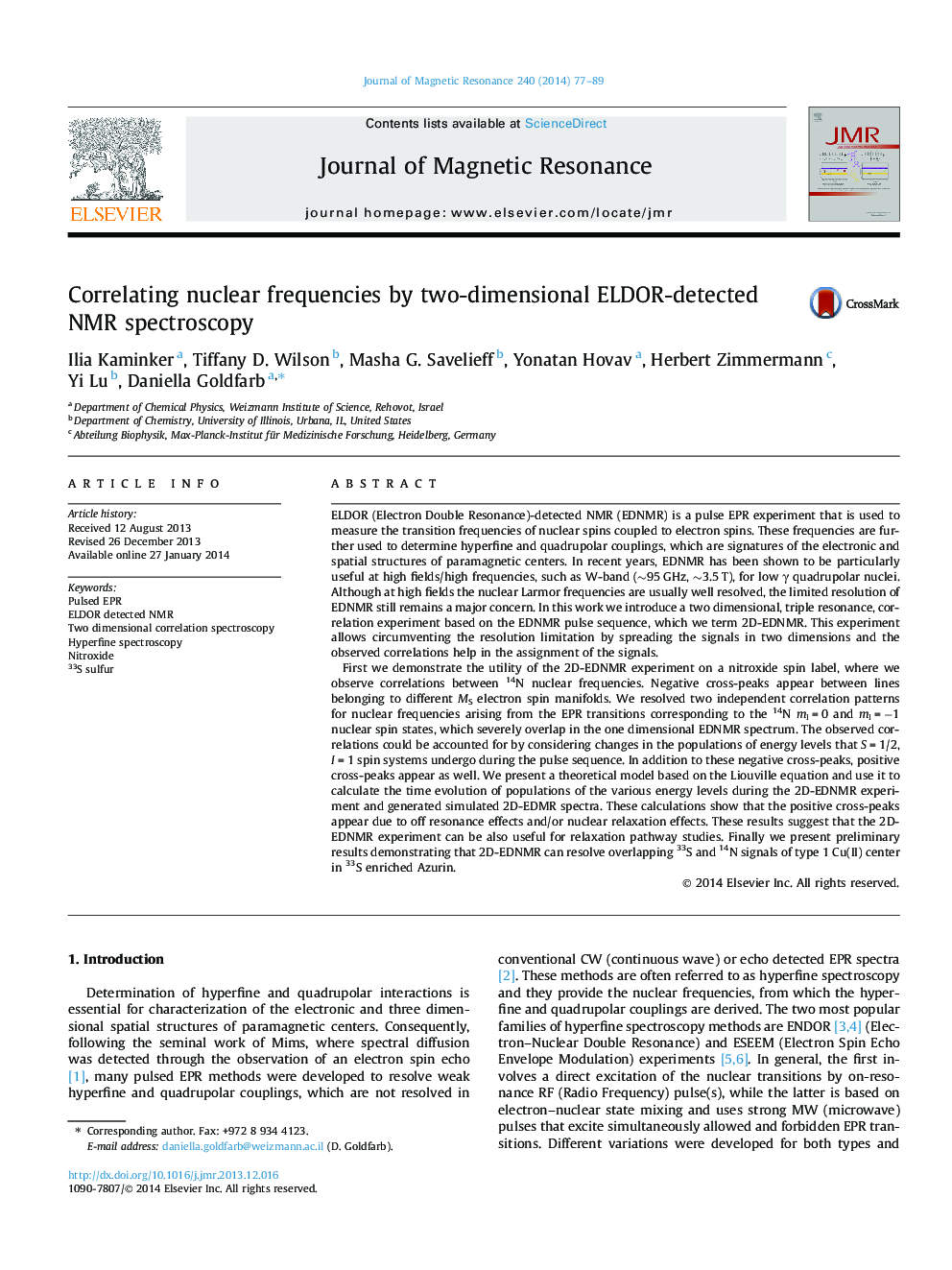| کد مقاله | کد نشریه | سال انتشار | مقاله انگلیسی | نسخه تمام متن |
|---|---|---|---|---|
| 5405467 | 1506021 | 2014 | 13 صفحه PDF | دانلود رایگان |

- A triple resonance experiment that correlates ELDOR-detected NMR signals is described.
- Theory and simulations to account for the cross peaks is presented.
- Negative cross peaks appear between nuclear frequencies belonging to different MS manifolds.
- Positive cross peaks are produced by of off resonance effects and nuclear relaxation.
- Experiment is demonstrated on 14N of a nitroxide and 33S and 14N of Cu(II) type one center of Azurin.
ELDOR (Electron Double Resonance)-detected NMR (EDNMR) is a pulse EPR experiment that is used to measure the transition frequencies of nuclear spins coupled to electron spins. These frequencies are further used to determine hyperfine and quadrupolar couplings, which are signatures of the electronic and spatial structures of paramagnetic centers. In recent years, EDNMR has been shown to be particularly useful at high fields/high frequencies, such as W-band (â¼95 GHz, â¼3.5 T), for low γ quadrupolar nuclei. Although at high fields the nuclear Larmor frequencies are usually well resolved, the limited resolution of EDNMR still remains a major concern. In this work we introduce a two dimensional, triple resonance, correlation experiment based on the EDNMR pulse sequence, which we term 2D-EDNMR. This experiment allows circumventing the resolution limitation by spreading the signals in two dimensions and the observed correlations help in the assignment of the signals.First we demonstrate the utility of the 2D-EDNMR experiment on a nitroxide spin label, where we observe correlations between 14N nuclear frequencies. Negative cross-peaks appear between lines belonging to different MS electron spin manifolds. We resolved two independent correlation patterns for nuclear frequencies arising from the EPR transitions corresponding to the 14N mI = 0 and mI = â1 nuclear spin states, which severely overlap in the one dimensional EDNMR spectrum. The observed correlations could be accounted for by considering changes in the populations of energy levels that S = 1/2, I = 1 spin systems undergo during the pulse sequence. In addition to these negative cross-peaks, positive cross-peaks appear as well. We present a theoretical model based on the Liouville equation and use it to calculate the time evolution of populations of the various energy levels during the 2D-EDNMR experiment and generated simulated 2D-EDMR spectra. These calculations show that the positive cross-peaks appear due to off resonance effects and/or nuclear relaxation effects. These results suggest that the 2D-EDNMR experiment can be also useful for relaxation pathway studies. Finally we present preliminary results demonstrating that 2D-EDNMR can resolve overlapping 33S and 14N signals of type 1 Cu(II) center in 33S enriched Azurin.
120
Journal: Journal of Magnetic Resonance - Volume 240, March 2014, Pages 77-89